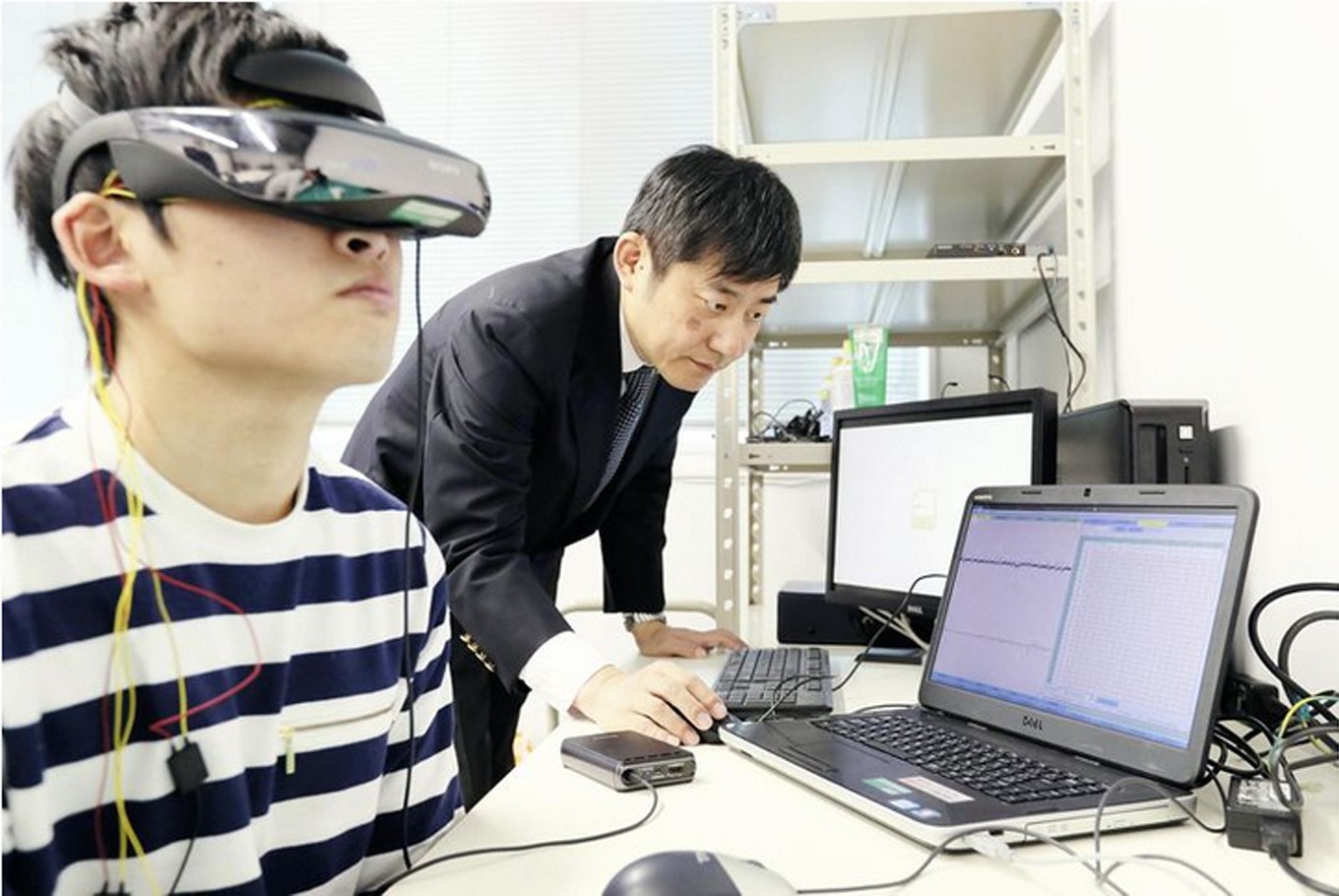Research team creates goggle-like device that can test for glaucoma
A team of university researchers and others have developed a medical device shaped like goggles that can diagnose glaucoma, the leading cause of blindness in Japan.
Change Size
 Glaucoma patients gradually lose their vision. The goggles, which can diagnose the eye condition through a simpler process, were developed by researchers from Kansai University and Osaka Medical College. (Shutterstock/File)
Glaucoma patients gradually lose their vision. The goggles, which can diagnose the eye condition through a simpler process, were developed by researchers from Kansai University and Osaka Medical College. (Shutterstock/File)
A
team of university researchers and others have developed a medical device shaped like goggles that can diagnose glaucoma (see below), the leading cause of blindness in Japan.
Glaucoma patients gradually lose their vision. The goggles, which can diagnose the eye condition through a simpler process, were developed by researchers from Kansai University and Osaka Medical College.
In April, the team will begin testing the new device in medical care institutions and elsewhere, with the aim of commercializing them in autumn 2018. The device could be used in companies’ health checks on employees, so it is expected to result in earlier detection.
Provides accurate data
In general, eye clinics with a darkroom exclusively for the purpose are needed to test whether people have partial vision loss. People who get checked also need to put their faces into vision measurement equipment without moving.

As a result, checks to detect glaucoma have not been conducted in most ordinary health checks. This has been one reason why the start of treatment can be delayed.
To address the problem, Prof. Kentaro Kotani of Kansai University — a member of the team and an expert in biological information engineering — looked to goggle-type displays, which can reproduce scenes inside a darkroom right in front of people.
The team combined such displays with sensors for measuring eyeball movement, and developed the new device, which can accurately detect if there is partial vision loss and which part of the examinee’s vision has been lost.
The diagnoses can be made after the examinee, wearing the device, follows the movements of a gray dot shown on the display with each of their eyes. The checks are done about 60 times, taking five minutes each for the right and left eyes.
Tests were conducted on about 10 glaucoma patients and about 10 healthy people. The team said the obtained data were as accurate as those from checks conducted in darkrooms.
Read also: How to stay healthy when you reach 40
Mass production in view
Currently, the team is developing a new model for mass production in cooperation with Syowa, a machine parts manufacturing and processing company based in Miyazaki Prefecture.
Starting in April, the team will conduct examinations using five units of the new model. The examinations will involve 50 glaucoma patients at Osaka Medical College Hospital and 50 healthy people at Kansai University.
After obtaining data necessary for certificates for commercial sales, the team aims to make the devices commercially available around October next year.
According to the Health, Labor and Welfare Ministry and other sources, one out of 20 Japanese aged 40 or older suffer from glaucoma. The illness is said to account for more than 20 percent of cases of blindness.
Once an area of vision has been lost, it is impossible to recover it. Thus, it is important to detect the illness at an early stage and receive treatment to stop the condition from worsening.
However, many people are unaware of glaucoma even when their vision has been partially lost. Many patients notice it only after their vision loss has widened. Glaucoma is also said to cause traffic accidents.
Kotani said: “[With the device,] a darkroom is not necessary, and checks can be conducted anywhere and in a simpler way. If this method is utilized, it can help prevent traffic accidents.”
■ Glaucoma
Nerves in the eyes are damaged for such reasons as increased pressure inside the eyeballs, leading to vision loss. Causes include aging. Basic treatment involves using eye drops to lower the pressure inside the eyeballs. If such methods are not sufficiently effective, treatment using lasers or surgery becomes necessary.
This article appeared on The Japan News newspaper website, which is a member of Asia News Network and a media partner of The Jakarta Post









